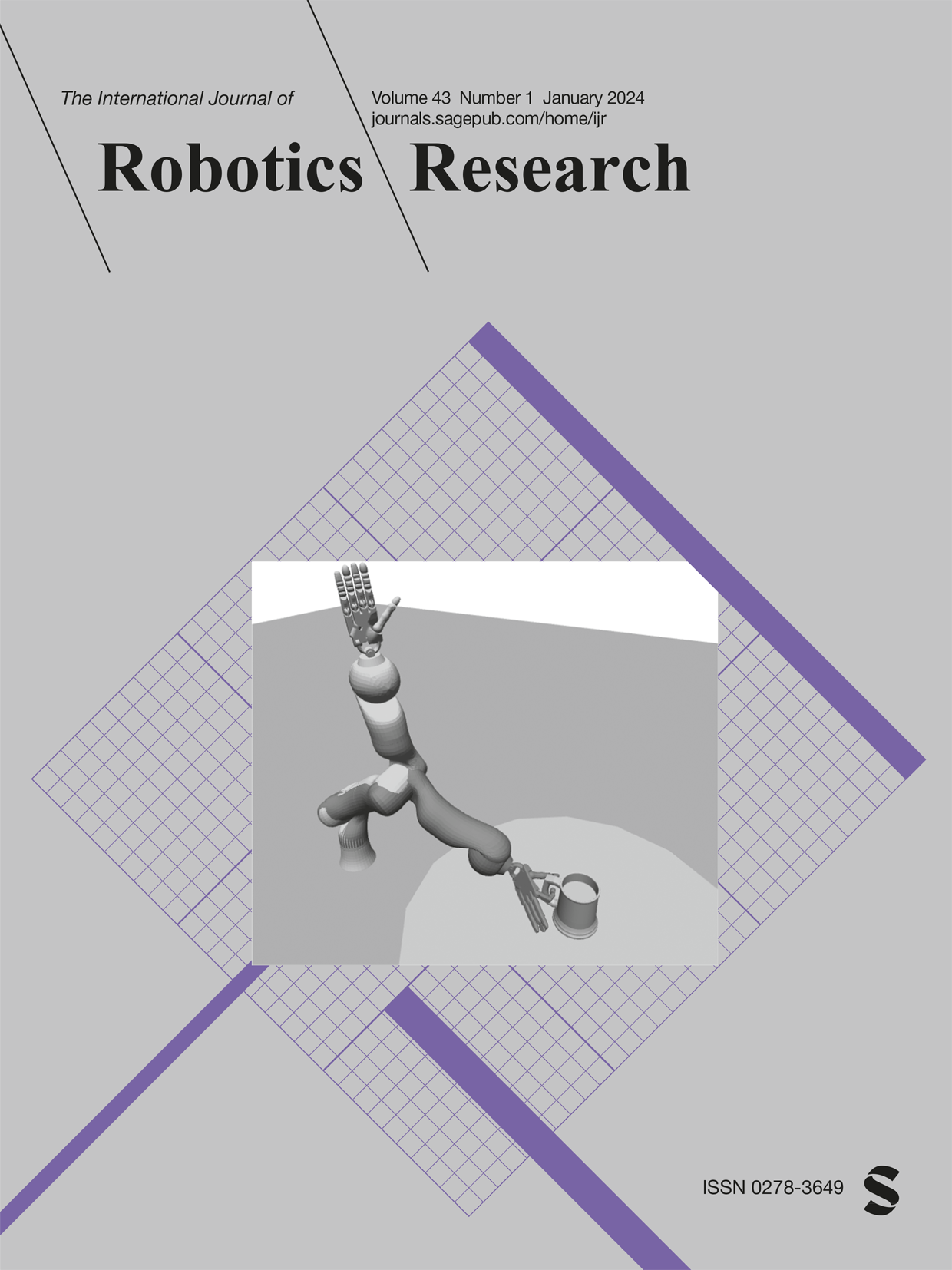The Before, During, and After of Multi-robot Deadlock
IF 5
1区 计算机科学
Q1 ROBOTICS
引用次数: 5
Abstract
Collision avoidance for multi-robot systems is a well-studied problem. Recently, control barrier functions (CBFs) have been proposed for synthesizing controllers that guarantee collision avoidance and goal stabilization for multiple robots. However, it has been noted that reactive control synthesis methods (such as CBFs) are prone to deadlock, an equilibrium of system dynamics that causes the robots to stall before reaching their goals. In this paper, we analyze the closed-loop dynamics of robots using CBFs, to characterize controller parameters, initial conditions, and goal locations that invariably lead the system to deadlock. Using tools from duality theory, we derive geometric properties of robot configurations of an N robot system once it is in deadlock and we justify them using the mechanics interpretation of KKT conditions. Our key deductions are that (1) system deadlock is characterized by a force equilibrium on robots and (2) deadlock occurs to ensure safety when safety is at the brink of being violated. These deductions allow us to interpret deadlock as a subset of the state space, and we show that this set is non-empty and located on the boundary of the safe set. By exploiting these properties, we analyze the number of admissible robot configurations in deadlock and develop a provably correct decentralized algorithm for deadlock resolution to safely deliver the robots to their goals. This algorithm is validated in simulations as well as experimentally on Khepera-IV robots For an interactive version of this paper, please visit https://arxiv.org/abs/2206.01781.多机器人死锁的前、中、后
多机器人系统的碰撞避免是一个研究得很好的问题。最近,有人提出了控制屏障函数(CBF)来合成控制器,以保证多个机器人的碰撞避免和目标稳定。然而,已经注意到,反应控制综合方法(如CBF)容易出现死锁,这是一种系统动力学平衡,导致机器人在达到目标之前失速。在本文中,我们使用CBF分析了机器人的闭环动力学,以表征总是导致系统死锁的控制器参数、初始条件和目标位置。利用对偶理论中的工具,我们推导了N机器人系统在死锁时机器人配置的几何性质,并用KKT条件的力学解释证明了这些几何性质。我们的主要推论是:(1)系统死锁的特征是机器人上的力平衡;(2)当安全处于被侵犯的边缘时,死锁的发生是为了确保安全。这些推导允许我们将死锁解释为状态空间的子集,并且我们证明了这个集合是非空的,并且位于安全集合的边界上。通过利用这些特性,我们分析了死锁中可允许的机器人配置的数量,并开发了一种可证明正确的死锁解决分散算法,以安全地将机器人交付到其目标。该算法在Khepera IV机器人的模拟和实验中得到了验证。有关本文的交互式版本,请访问https://arxiv.org/abs/2206.01781.
本文章由计算机程序翻译,如有差异,请以英文原文为准。
求助全文
约1分钟内获得全文
求助全文
来源期刊
CiteScore
22.20
自引率
0.00%
发文量
34
审稿时长
6-12 weeks
期刊介绍:
The International Journal of Robotics Research (IJRR) has been a leading peer-reviewed publication in the field for over two decades. It holds the distinction of being the first scholarly journal dedicated to robotics research.
IJRR presents cutting-edge and thought-provoking original research papers, articles, and reviews that delve into groundbreaking trends, technical advancements, and theoretical developments in robotics. Renowned scholars and practitioners contribute to its content, offering their expertise and insights. This journal covers a wide range of topics, going beyond narrow technical advancements to encompass various aspects of robotics.
The primary aim of IJRR is to publish work that has lasting value for the scientific and technological advancement of the field. Only original, robust, and practical research that can serve as a foundation for further progress is considered for publication. The focus is on producing content that will remain valuable and relevant over time.
In summary, IJRR stands as a prestigious publication that drives innovation and knowledge in robotics research.

 求助内容:
求助内容: 应助结果提醒方式:
应助结果提醒方式:


